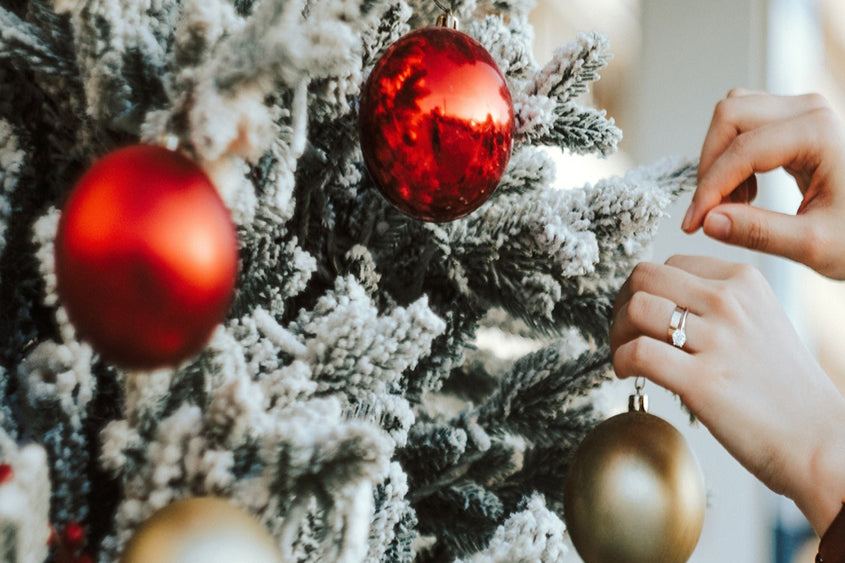
Introduction to Digital Fabric Printing
Jasonda Desmond
Introduction to Digital Fabric Printing: Technology, Design & Possibilities is a guest post written for us by Jasonda Desmond. Jasonda has long been a member of our forum and designed the masthead of Fashion-Incubator. She recently launched Dotty Logic a line of fabrics she’s designed. Today she shares what she learned in the process of putting out her first collection Beachcomber. Digital fabric printing is a great methodology to produce door covers for decorating along with other things that we will discuss.
Digital fabric printing is a relatively new technology with tons of applications. I just completed my first line of digitally printed fabric earlier this year and I’d like to share a little bit about the technology, design process and possibilities.
Technology
Most commercially available fabric is rotary screen printed; each print run is typically several thousand yards. The high minimums are due to the cost and time required to prepare a unique set of screens, with each color in a design requiring a separate screen. The main advantage of digital printing is the ability to do very small runs of each design (even less than 1 yard) because there are no screens to prepare.
The inkjet printing technology used in digital printing was first patented in 1968. In the 1990s, inkjet printers became widely available for paper printing applications – you might even have one on your desk right now! The technology has continued to develop and there are now specialized wide-format printers which can handle a variety of substrates – everything from paper to canvas to vinyl, and of course, fabric.
The inks used in digital printing are formulated specifically for each type of fiber (cotton, silk, polyester, nylon, etc). During the printing process, the fabric is fed through the printer using rollers and ink is applied to the surface in the form of thousands of tiny droplets. The fabric is then finished using heat and/or steam to cure the ink (some inks also require washing and drying). Digitally printed fabric will wash and wear the same as any other fabric, although with some types of ink you may see some initial fading in the first wash.
Design Process
Designs can be created digitally with almost any graphic design software (Photoshop and Illustrator are the most popular). Alternatively, existing artwork or photographs can be scanned and then digitally manipulated to make a pattern. Usually, designs are created as a seamless pattern that is repeated (tiled) across the fabric. You can also create a design that fills an entire yard without repeating, but you may run into issues if the size of the file is too large for the printing service to process.
Some helpful things to remember when designing for fabric:
Make color easy. Find out what color model your printer uses (most often CYMK or Lab) and choose your colors accordingly. You should expect colors to appear differently on the fabric than on your computer screen. Some colors such as deep, rich reds may be hard to reproduce. Large areas of solid color may come out with bands of lighter and darker tones. Setting up your design so that the colors can easily be changed (using layers or vector artwork) will save you a lot of headaches.
Focus on the finish. It’s easy to get caught up in the artistic aspect of creating a beautiful design and lose sight of the fact that fabric is never the end product – it’s always a part of something else. Make a habit of picturing the print as part of the finished product, especially concerning the size of the print. I have a ruler next to my computer – whenever I can’t quite decide if the scale is correct, I’ll hold the ruler up to the screen and zoom in or out until the size matches up. Sounds silly, but it works!
Print swatches. The color and texture of the fabric can have a noticeable effect on the print. Shiny fabrics like silk reflect light and can make the print seem lighter – thin fabric can be translucent and this will make print look washed out. Most digital printing services offer affordable swatches – even if they only sell by the yard, you can gang up a couple of designs onto a single yard.
Stay original. It may seem like a good idea to use digital printing to make a copy of a popular commercial print that is no longer available, but unlike clothing designs, print designs can be (and usually are) copyrighted by the artist or the manufacturer. It’s best to stick with your own unique designs – if you’re not artistically inclined, you can always hire a designer to make the perfect print for you.
Possibilities:
Personalization. Every yard you print can be completely customized and personalized. Print fabric with names and dates, for use as quilt blocks, t-shirts, doggy raincoats, pillowcases, etc. Every item in your line can come in a different color. You can also do more practical kinds of customization, like creating sequentially numbered labels.
Lean and Just in Time (JIT) manufacturing. Small runs of fabric can easily be printed for sampling purposes. No more hunting high and low for the perfect print, only to find that it’s no longer available when you need more. No such thing as fabric inventory – with an on-site printer, it’s possible to print fabric on the same day that it will be cut. You can even have a pattern printed directly on the fabric.
Trends and fast fashion. Traditional screen printed fabrics usually appear on the market about a year after they are designed. With digital printing, it’s possible to go from the design stage to finished fabric in a matter of weeks (or days, with an on-site printer). This allows you to take advantage of current trends, and even change




Leave a comment